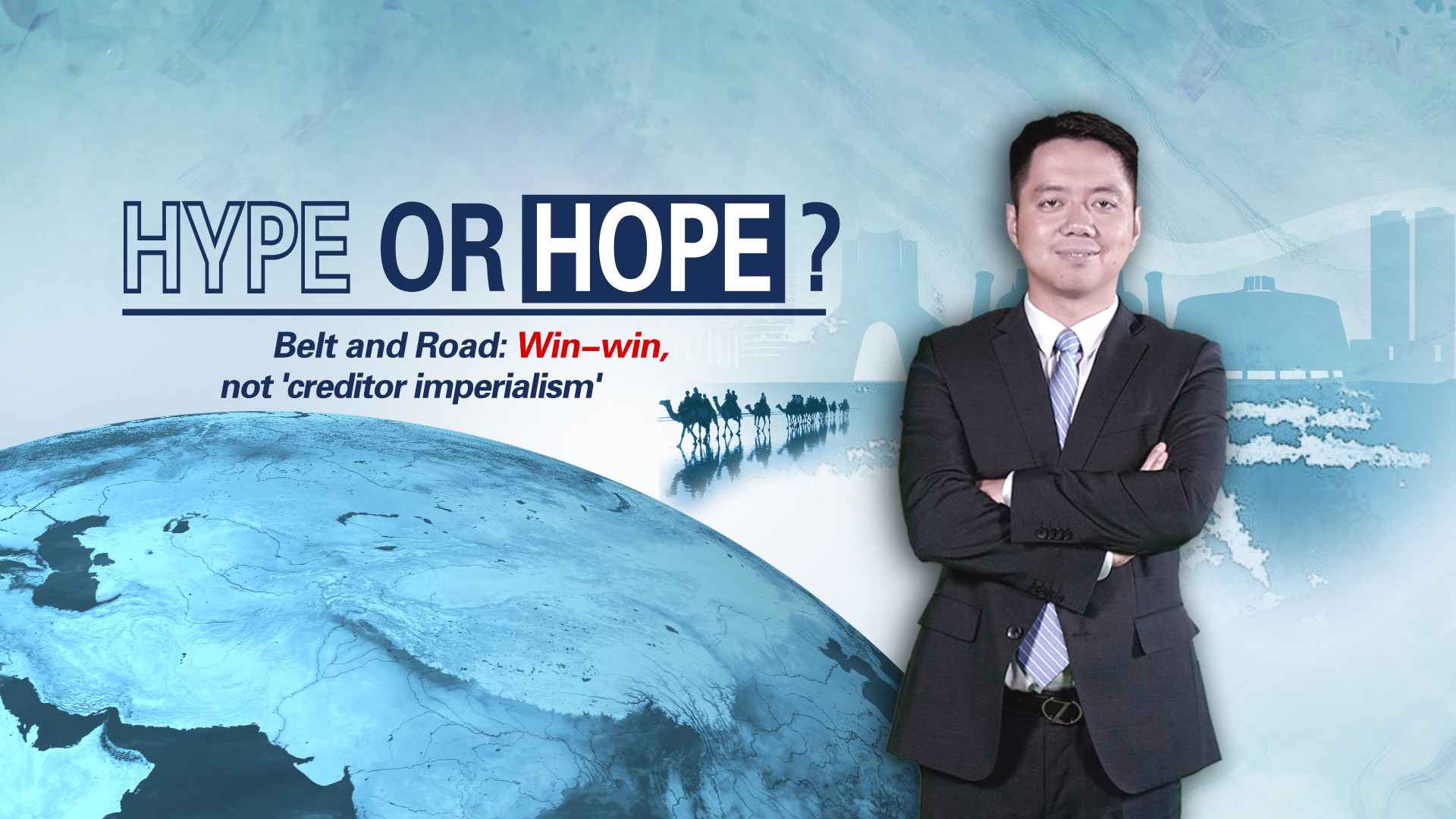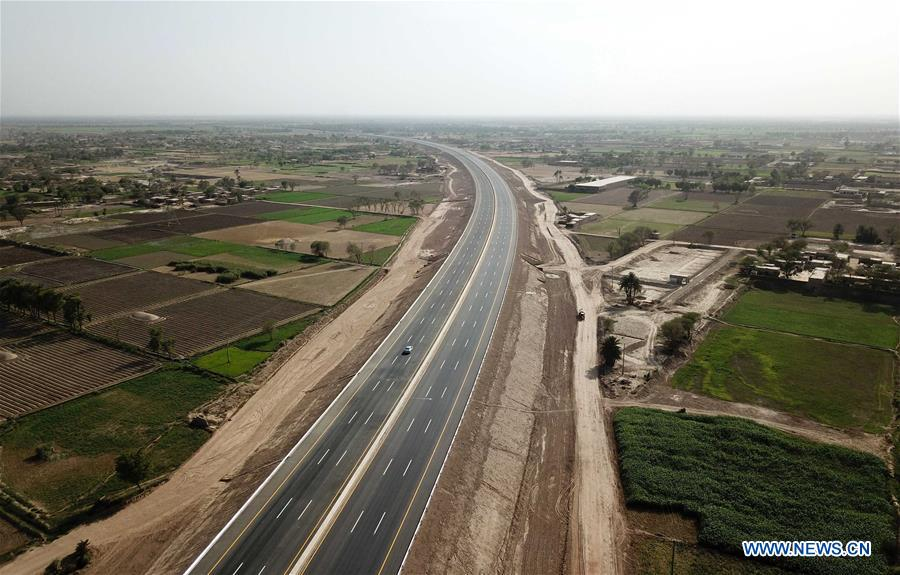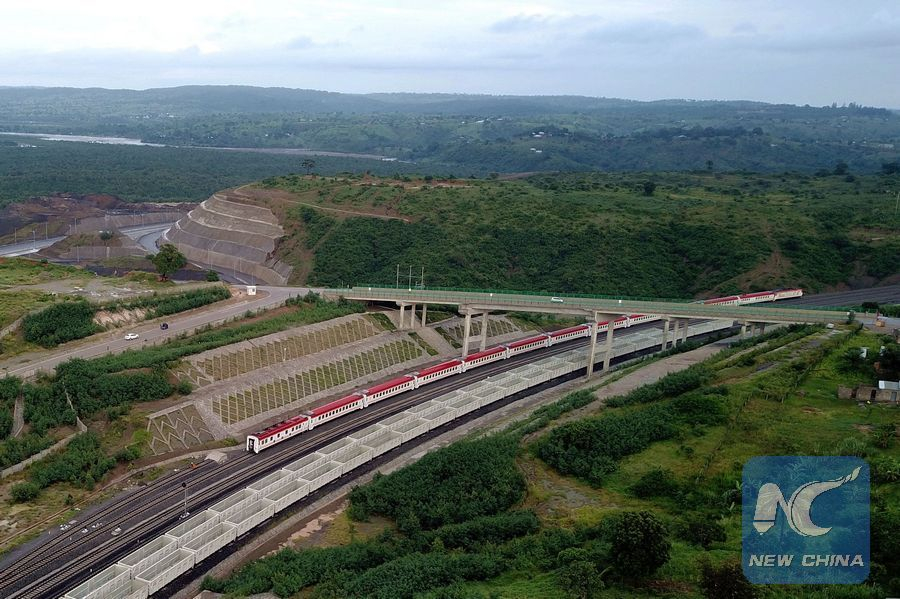
Opinion
11:54, 23-Apr-2019
Belt and Road: Win-win, not 'creditor imperialism'
Updated
20:18, 24-Apr-2019
Wang Wen
04:04

Editor's note: The 2nd Belt and Road Forum for International Cooperation will be held in Beijing in late April. The Belt and Road Initiative (BRI), put forward by Chinese President Xi Jinping in 2013, has attracted cheers and jeers at the same time. A total of 126 countries and 29 international organizations have signed up for the sprawling transcontinental connectivity project, despite a tireless chorus of opposing voices and a cacophony of claims about its intention and operations. CGTN is attempting to cut through the noise in a new short video series titled “Hype or Hope?” Here is the fourth of our five episodes to help you separate BRI facts from fiction. Wang Wen is the executive dean of the Chongyang Institute for Financial Studies at Renmin University of China.
Despite the remarkable achievements made over the past five years, the Belt and Road Initiative (BRI) still faces skepticism and misunderstandings in some quarters.
At the end of 2017, Indian professor Brahma Chellaney published an article titled China's Creditor Imperialism, claiming "China is using sovereign debt to bend other states to its will."
The accusation has since raised widespread discussion in Western countries.
In fact, the so-called “creditor imperialism” allegations do not bear scrutiny.
When it comes to debt, it is important to see whether it is used for consumption or investment.
Developing countries borrow money to invest in infrastructure construction and improve economic development, rather than for consumption. In this sense, their debt is indicative of the volume of assets and the strength of economic growth.
For countries along the routes, the debt under the BRI accounts for only a part of their government debts, and the economic growth created by this debt can ensure their repayment capacity.

A view of the Multan-Sukkur Motorway in Multan, Pakistan, May 25, 2018. /Xinhua Photo
A view of the Multan-Sukkur Motorway in Multan, Pakistan, May 25, 2018. /Xinhua Photo
According to a report released by the Central Bank of Sri Lanka in 2017, the foreign debt of Sri Lanka totaled 51.8 billion U.S. dollars, and the China-related debts only accounted for 10.6 percent, among which, 61 percent of the Chinese loan interest rates were far lower than those of the international market.
Actually, many developing countries' debt issues are not related to the BRI. Besides their "historical burden," the declining economy, the fall in commodity prices in recent years, the turbulent international financial market… all contributed to the shrinking of revenue and the increase of borrowing costs in those countries.
China has never tried to seek special interests from its “creditor” position, as depicted by some media; rather, it has been leveraging funds to help other developing countries generate revenue.
It is reported that the Mombasa-Nairobi railway built by Chinese companies has created about 50,000 jobs for Kenya. The Sri Lanka Puttalam coal-fired power station built by Chinese companies provides more than 40 percent of the electricity to the country, benefiting more than 20 million people in Sri Lanka.
Meanwhile, China also helps developing countries escape from their heavy debt and tries to increase the transparency of investment projects by introducing third party cooperation.

A train running on the Chinese-built Mombasa-Nairobi Standard Gauge Railway in Kenya. /Xinhua Photo
A train running on the Chinese-built Mombasa-Nairobi Standard Gauge Railway in Kenya. /Xinhua Photo
For example, China and Japan have agreed to cooperate in infrastructure construction projects in third countries. The first operation is expected to be implemented on projects carried out in the eastern economic corridor of Thailand.
In addition, Saudi Arabia has agreed to invest 10 billion U.S. dollars to participate in the construction of the China-Pakistan Economic Corridor. In this way, Pakistan's demand for Chinese loans will also decrease.
To a certain extent, advocating "creditor imperialism" reflects the anxiety of Western countries about China's rise, but maybe their anxiety will be more serious in the future if the BRI is not fairly viewed, as the BRI has now attracted more than 100 countries for international cooperation, and the number is increasing.
Read More:
Editing and creative design: Wang Xinyan
Videographer: Sheng Jie
Animators: Xu Qianyun
Video editors: Sheng Jie and Wang Xinyan
Producer: Bi Jianlu
Supervisor: Mei Yan
(If you want to contribute and have specific expertise, please contact us at opinions@cgtn.com.)

SITEMAP
Copyright © 2018 CGTN. Beijing ICP prepared NO.16065310-3
Copyright © 2018 CGTN. Beijing ICP prepared NO.16065310-3